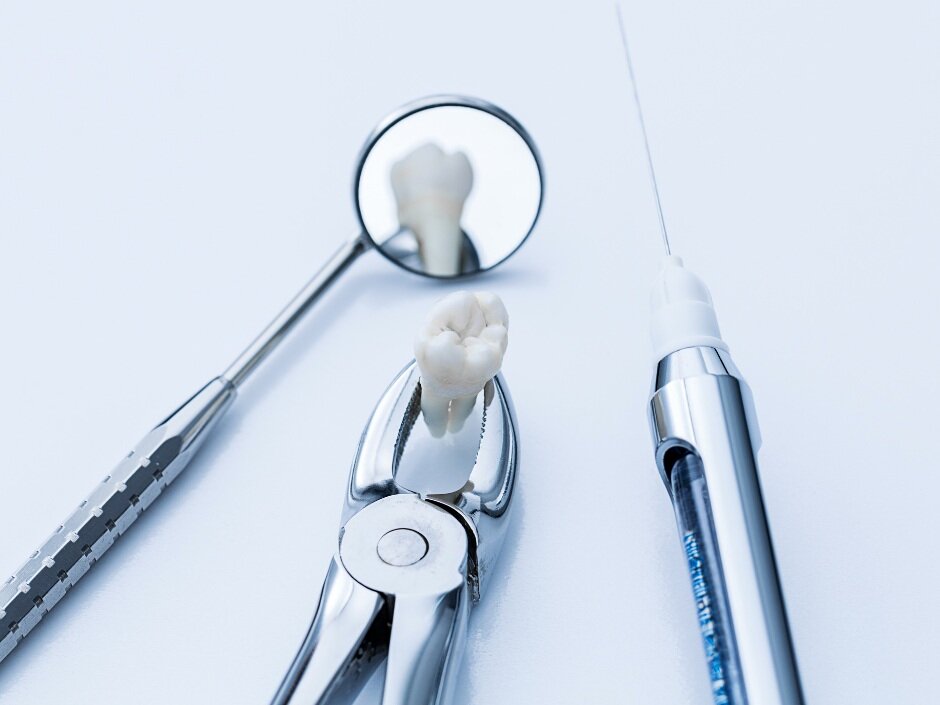Tooth Removal / Extraction
The goal of modern dentistry is to save and restore teeth. The benefits of natural teeth are numerous when compared to prosthetic teeth. Only after trying endodontic (root canal) and periodontic (gum) treatment should you consider extraction.
If extraction is inevitable, Dr. Leclair may place an immediate implant into the extraction site in order to expedite treatment. As a result, only one surgery is needed. If the extraction site is deficient in bone, Dr. Leclair may be able to graft that location with additional bone.
Most dentists perform this routine treatment. However, in severe cases, the dentist may refer the case to an oral surgeon who specializes in the extraction of teeth.
The local anesthetics today are very effective in blocking most if not all pain reception. Also, various pain medications can be given for post-extraction care, making most extractions pain-free from start to finish.
Common Reasons For Tooth Extraction
Severe decay
Advanced periodontal (gum) disease
Wrongly positioned teeth
Fractured teeth or roots
Unrestorable teeth
Impacted teeth
Infection or disease
Orthodontic correction (prior to braces)
Wisdom Teeth
Third molars, commonly referred to as “wisdom teeth,” are a special case when it comes to extraction. Since the wisdom teeth are the last to come in, there is often little or no room left for them in the mouth. Due to this, they may come in partially or not at all.
Some people naturally lack one or more of their wisdom teeth. The dentist can take x-rays to determine how the teeth are erupting, if at all.
If surgical extraction of the wisdom teeth is indicated, it is usually better to have them removed as soon as possible, as healing can be lengthier for adults in later years. The ideal time for the extraction of wisdom teeth in young adults is between 19 and 30 years of age. Surgical extraction can be done under sedation, by which the patient is “put to sleep” for the surgical procedure.
With the help of our state of the art cone beam CT scanner, we are able to accurately determine with 3D imaging the exact position of the wisdom teeth.



